Sulamani Temple - A Glimpse into Myanmar's Past
Sulamani Temple, a mesmerizing gem in Bagan, Myanmar, stands as a testament to the grandeur of ancient Burmese architecture.
Dating back to the 12th century, this striking temple is renowned for its intricate details and fine craftsmanship, showcasing a harmonious blend of Indian and Mon architectural styles.
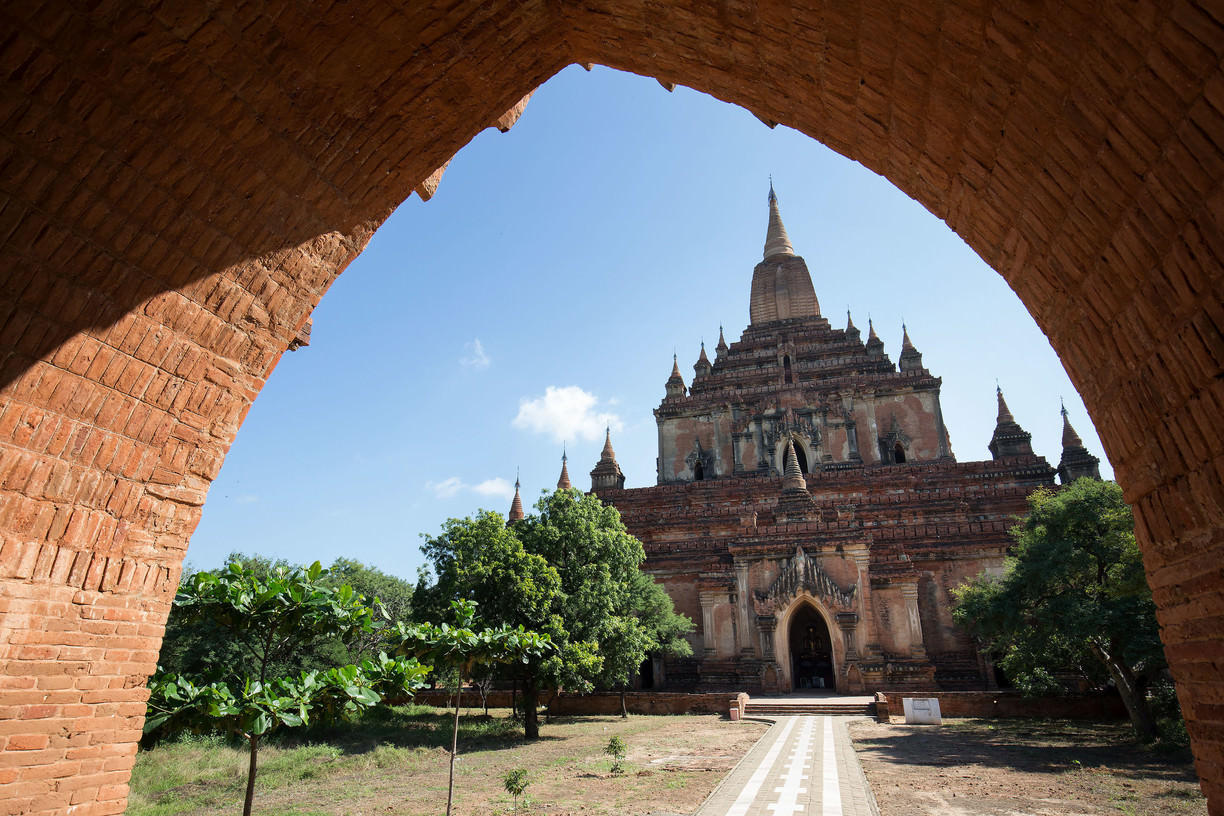
Overview of Sulamani Temple
- Location: Bagan, Myanmar
- Opening Hours: 08:00 - 20:00
- Entrance fee: Free Entry
Built by King Narapatisithu, one of the longest-reigning monarchs of the Kingdom of Bagan, the Sulamani Temple is a structure crafted from red bricks. Named after a ruby discovered by King Narapatisithu at the temple's construction site, Sulamani itself translates to "small ruby" in reference to the precious gem.
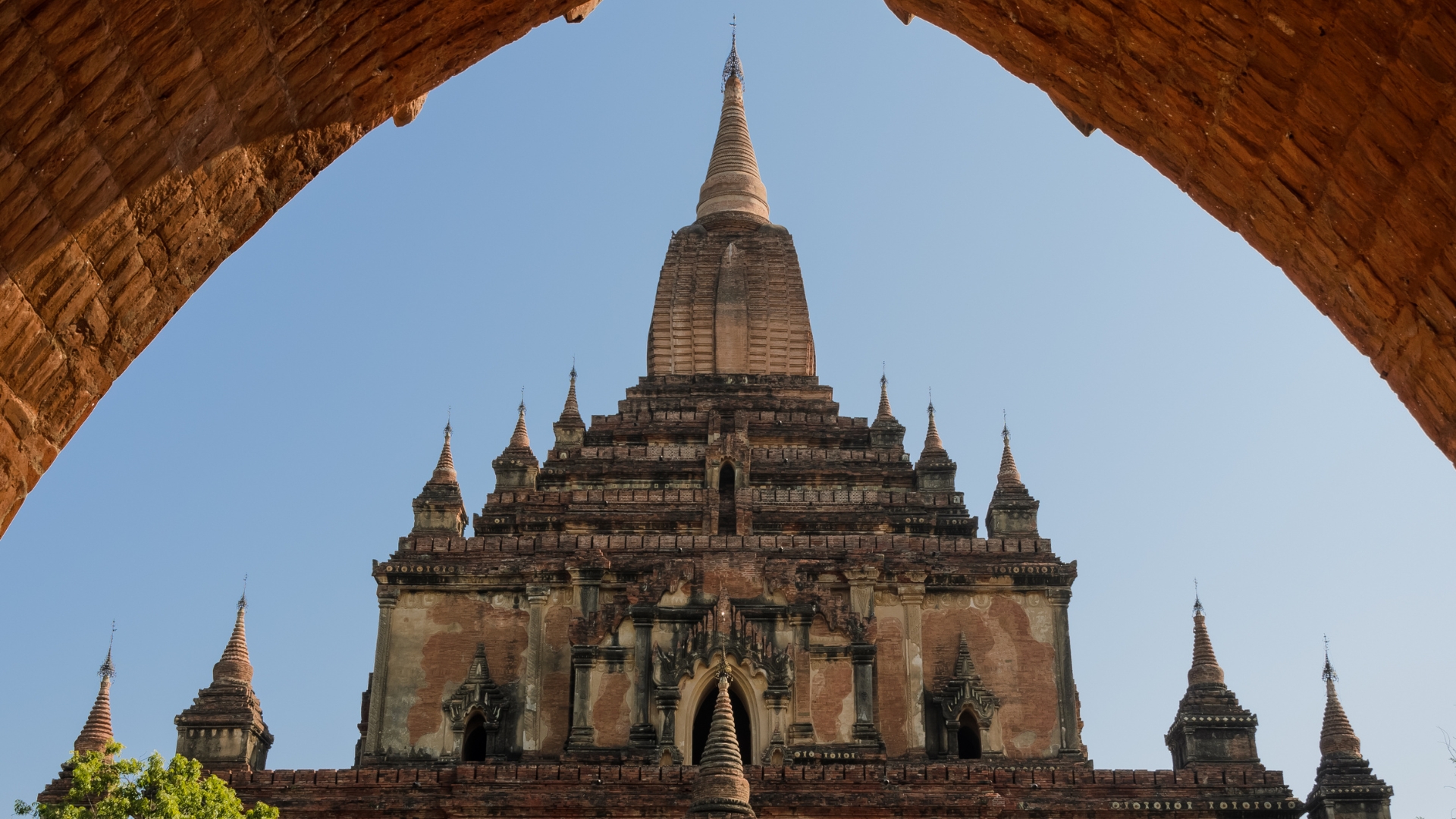
Sulamani Temple In Bagan, Myanmar
Architecturally, the temple features a tiered design influenced by Indian architectural styles. Adorning over 500 panels on its walls, visitors can witness the journey from life to the death of Lord Buddha—a prevalent theme in the grand temples of Bagan. Additionally, the temple's mural-covered walls depict various stories of Lord Buddha and mythical creatures.
Things To See When Visiting Sulamani Temple
The Sulamani Temple in Bagan, Myanmar, is renowned for its impressive architectural design and intricate details. Here are some key features of the temple's architecture:
Exterior Architecture
Marvel at the impressive exterior architecture of the Sulamani Temple, which is characterized by its grandeur and intricate design. Admire the elegant lines, graceful curves, and ornate carvings that adorn the temple's facade, reflecting the artistic achievements of the ancient Bagan civilization.

Terracotta Tiles With Intricate Designs
Central Tower
Admire the central tower of the Sulamani Temple, which rises majestically above the surrounding landscape. The tower, known as a sikhara, is crowned with a multi-tiered spire that symbolizes the spiritual aspirations of worshippers and offers a focal point for meditation and contemplation.
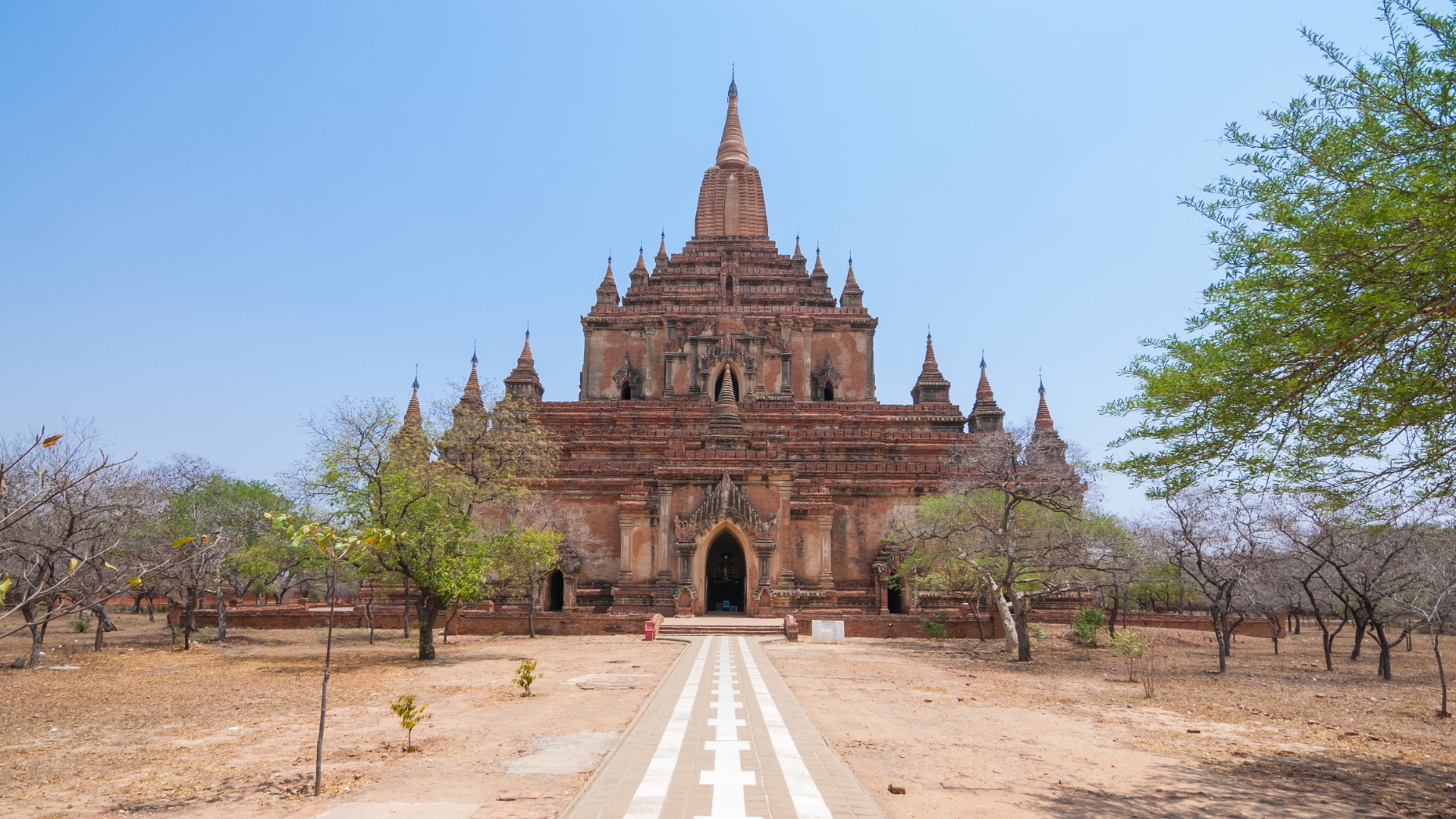
A Pyramidal Structure, Common In Many Bagan Temples
Decorative Details
Explore the temple's exterior walls to appreciate the intricate decorative details carved into the sandstone. Delicate floral motifs, mythical creatures, and scenes from Buddhist mythology adorn the surfaces, providing a visual feast for visitors and offering insights into the cultural and religious beliefs of the time.
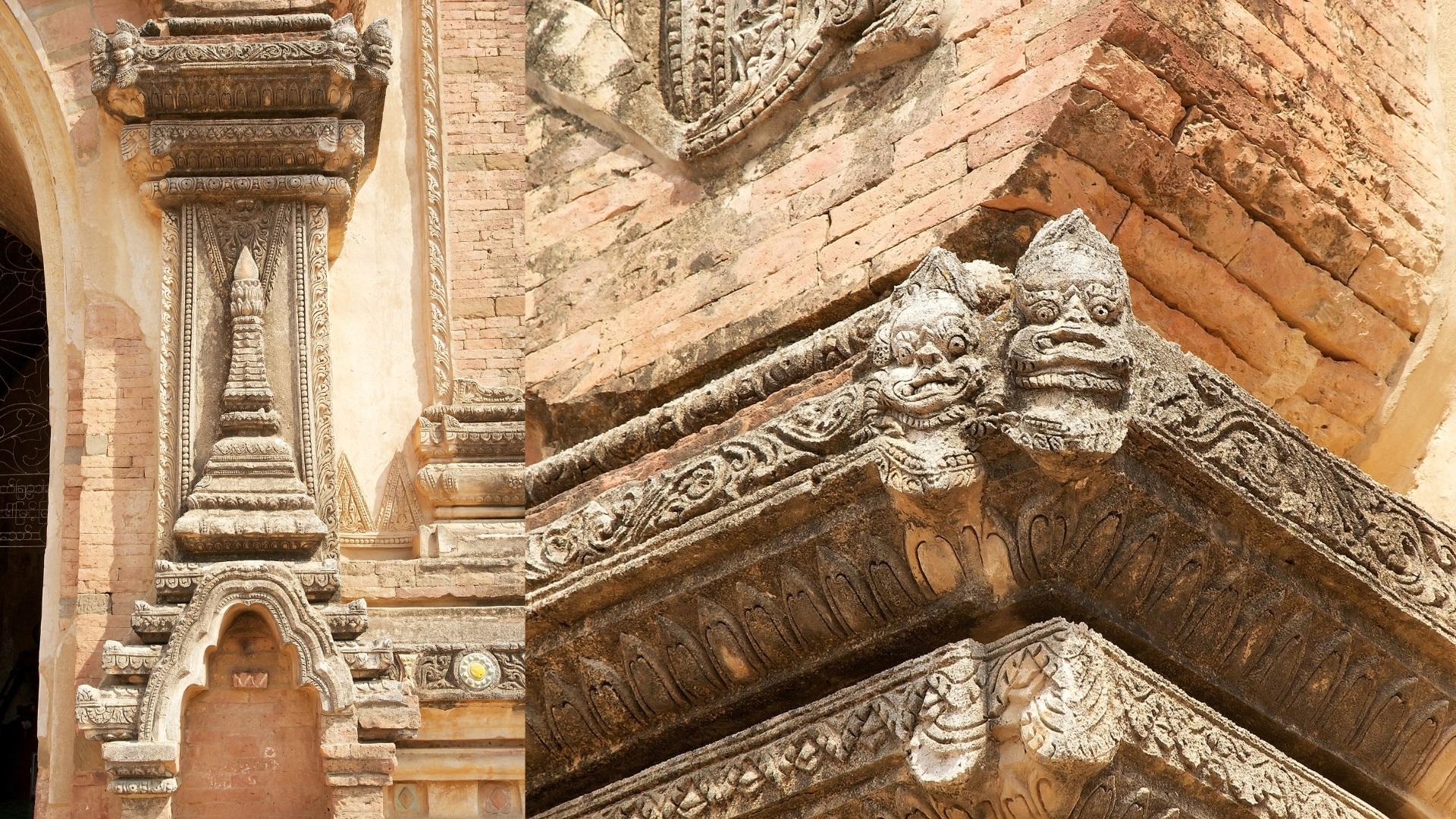
Pilasters And Pillars Were Adorned With Intricate Carvings
Inner Courtyard
Step inside the temple's inner courtyard to experience a sense of tranquility and reverence. Walk along the paved pathways and admire the surrounding galleries, which house a series of Buddha images, frescoes, and inscriptions that depict the life of the Buddha and other religious themes.
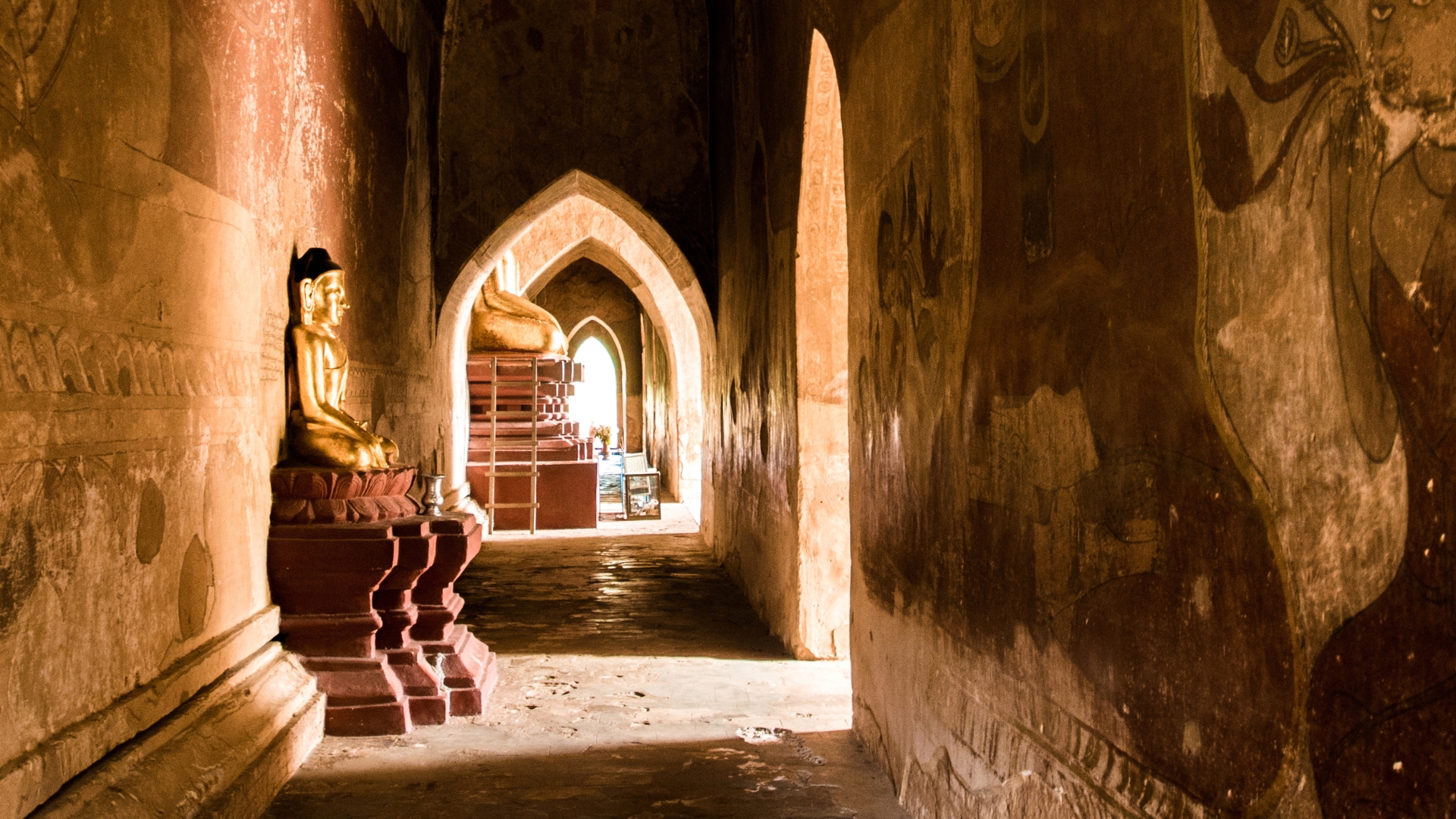
Passageways Are Adorned With Ornate Stone Carvings
Buddha Images
Encounter a collection of Buddha images enshrined within the temple's inner sanctum. These statues, crafted from various materials such as bronze, stone, and wood, showcase different mudras (hand gestures) and facial expressions, conveying the spiritual teachings of Buddhism and inspiring devotion among worshippers.
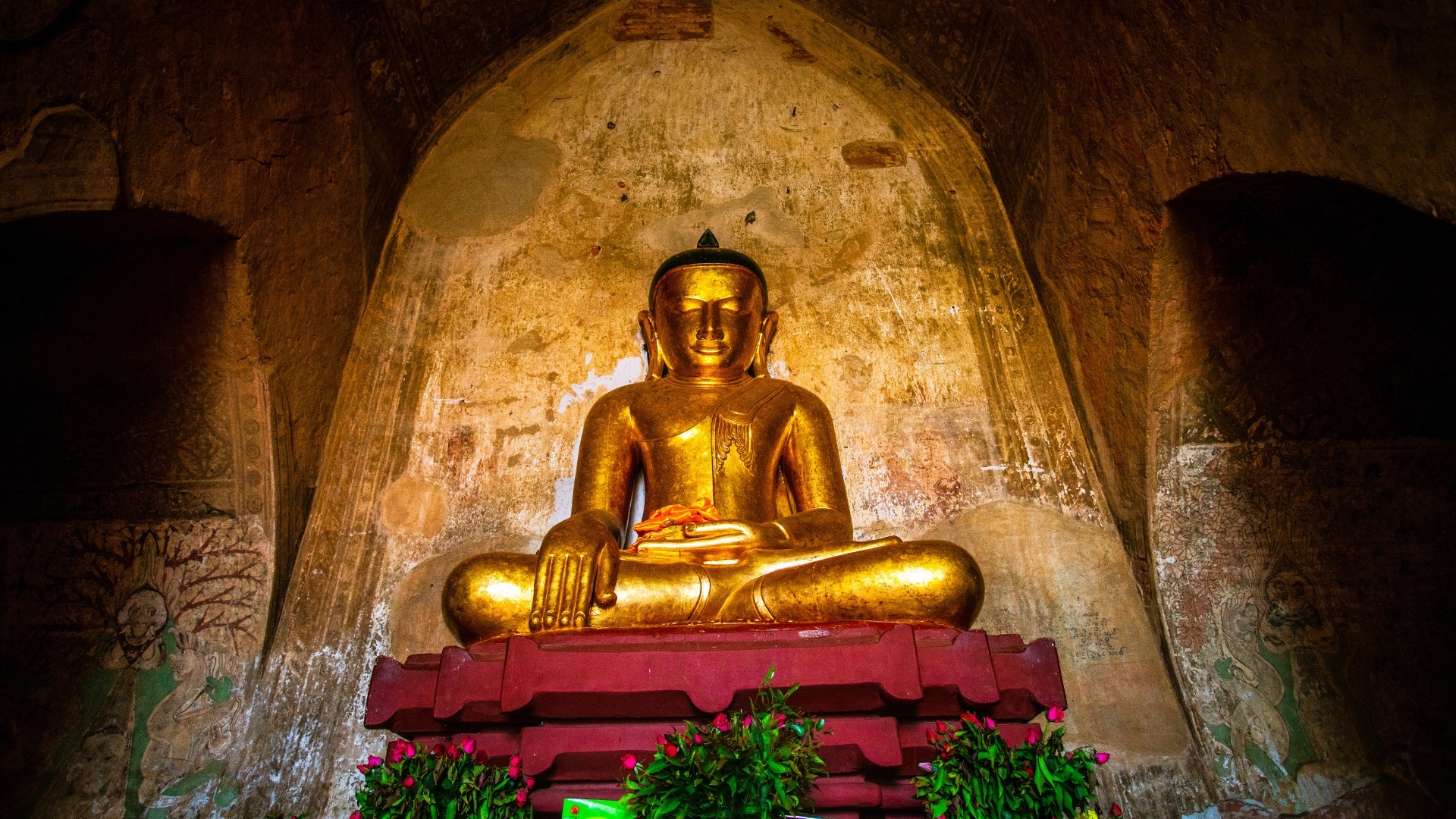
Golden Buddha image inside the temple
Frescoes and Murals
Admire the well-preserved frescoes and murals that adorn the interior walls of the Sulamani Temple. These vibrant artworks depict scenes from Buddhist cosmology, Jataka tales, and courtly life, offering a glimpse into the cultural and artistic heritage of the Bagan period.
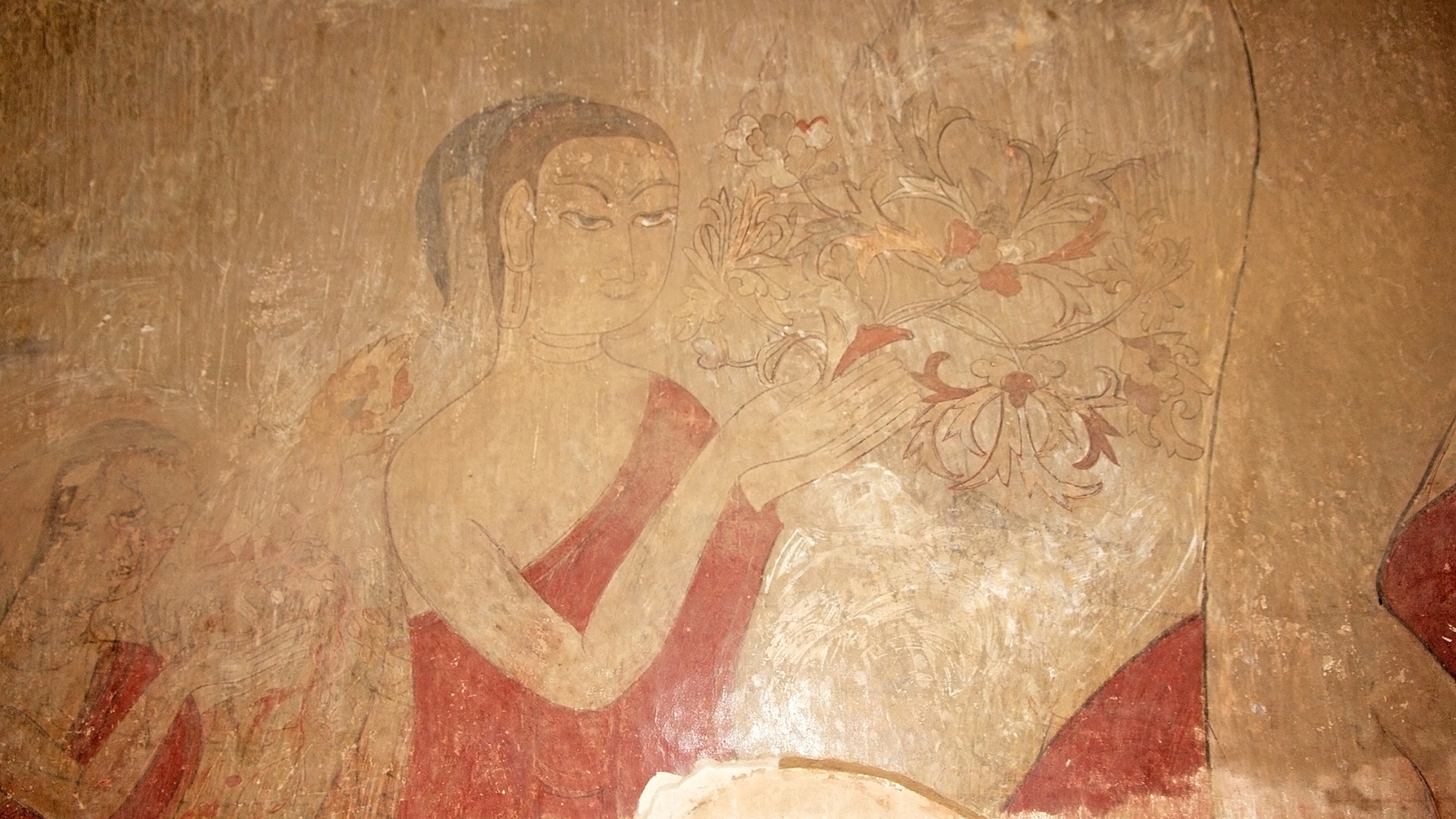
Mural Paintings Showcase Detailed Paintings Illustrating Stories From The Life Of Buddha
Panoramic Views
Ascend to the upper terraces of the Sulamani Temple to enjoy panoramic views of the surrounding plains dotted with ancient temples and pagodas. Witness the beauty of the Bagan archaeological zone, showcasing the legacy of a bygone era.
How To Get To Sulamani Temple
- By bus
Travelers typically opt for buses from Yangon, Mandalay, or Inle Lake to reach Bagan. These buses, such as JJ Express or Elite Express, provide high-quality and clean services, and tickets are available for around 16,000 kyats (7-8 USD).
- By taxi
This is a very popular means of transportation in Bagan. The fare for a day of traveling by taxi is approximately 43,000 kyats (around 21 USD). You will have the flexibility to visit famous tourist spots as the drivers are very familiar with the routes.
- By horse cart
For a touch of traditional ambiance, you can try moving around on a horse cart. The ticket price for a day of travel is around 25,000 kyats (12 USD). Since the driver is a local, they can serve as your free guide, providing insights into the most beautiful spot for watching the sunset and observing hot air balloons in Bagan. The drawback of these modes of transportation is that they are not very fast, so consider this factor when deciding.
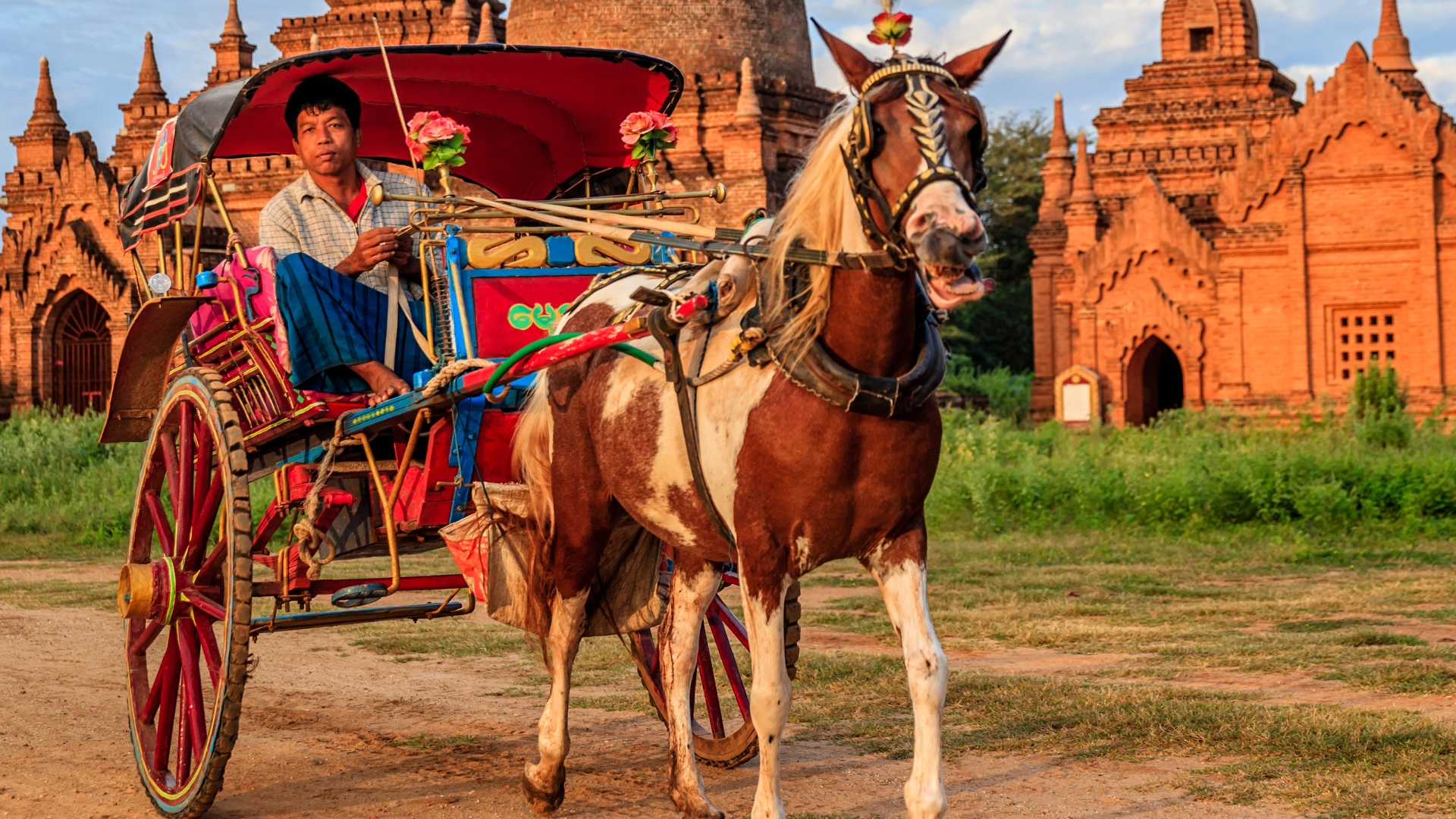
Horse Cart in Myanmar
Visit Nearby Interesting Attractions
When visiting Sulamani Temple in Bagan, Myanmar, there are several nearby attractions that enhance the overall experience of exploring this ancient and culturally rich region. Here are some interesting sites to consider:
Dhammayangyi Temple
Located near Sulamani Temple, Dhammayangyi is the largest temple in Bagan. Known for its massive size and unique brickwork, it's often referred to as Bagan's largest pyramid.
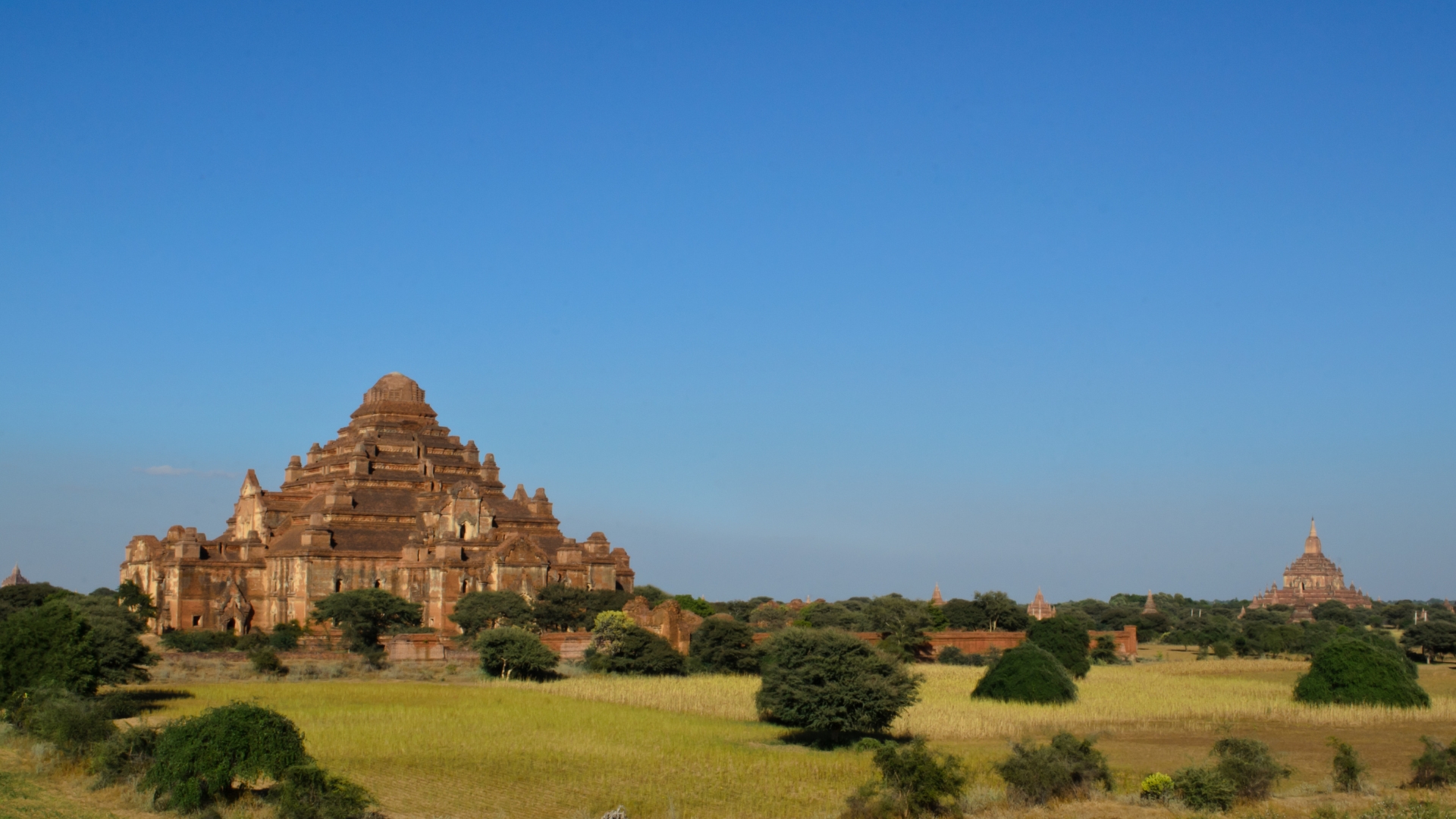
Dhammayangyi Temple
Shwesandaw Pagoda
A short distance away, Shwesandaw Pagoda is famous for its panoramic views, especially during sunrise and sunset. Visitors can climb to the top terrace for a breathtaking view of the Bagan plains and numerous temples.
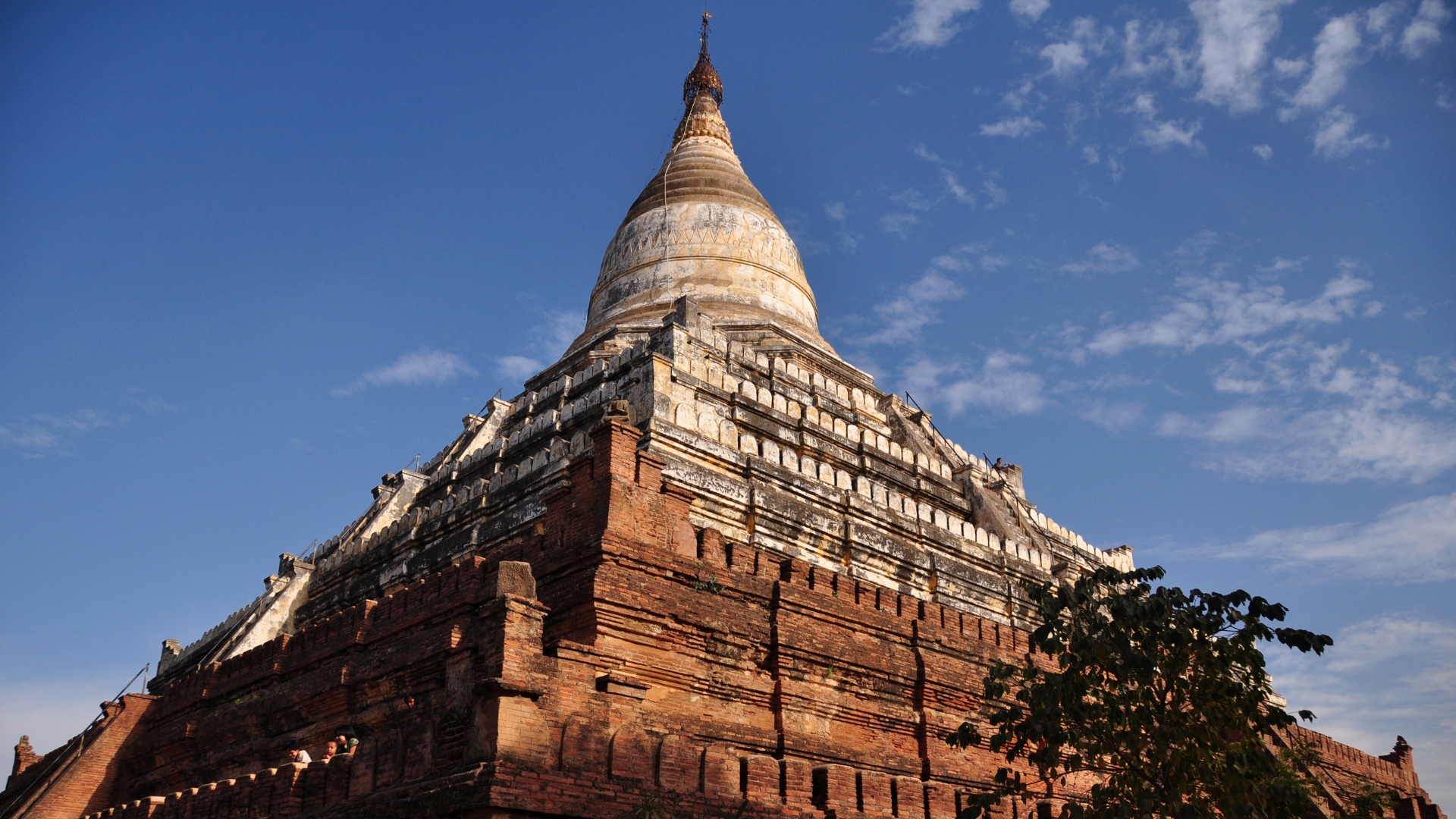
Shwesandaw Pagoda
Nyaung U Market
Experience local life at Nyaung U Market, a bustling market where vendors sell fresh produce, traditional crafts, and souvenirs. Engage with locals and immerse yourself in the vibrant atmosphere.
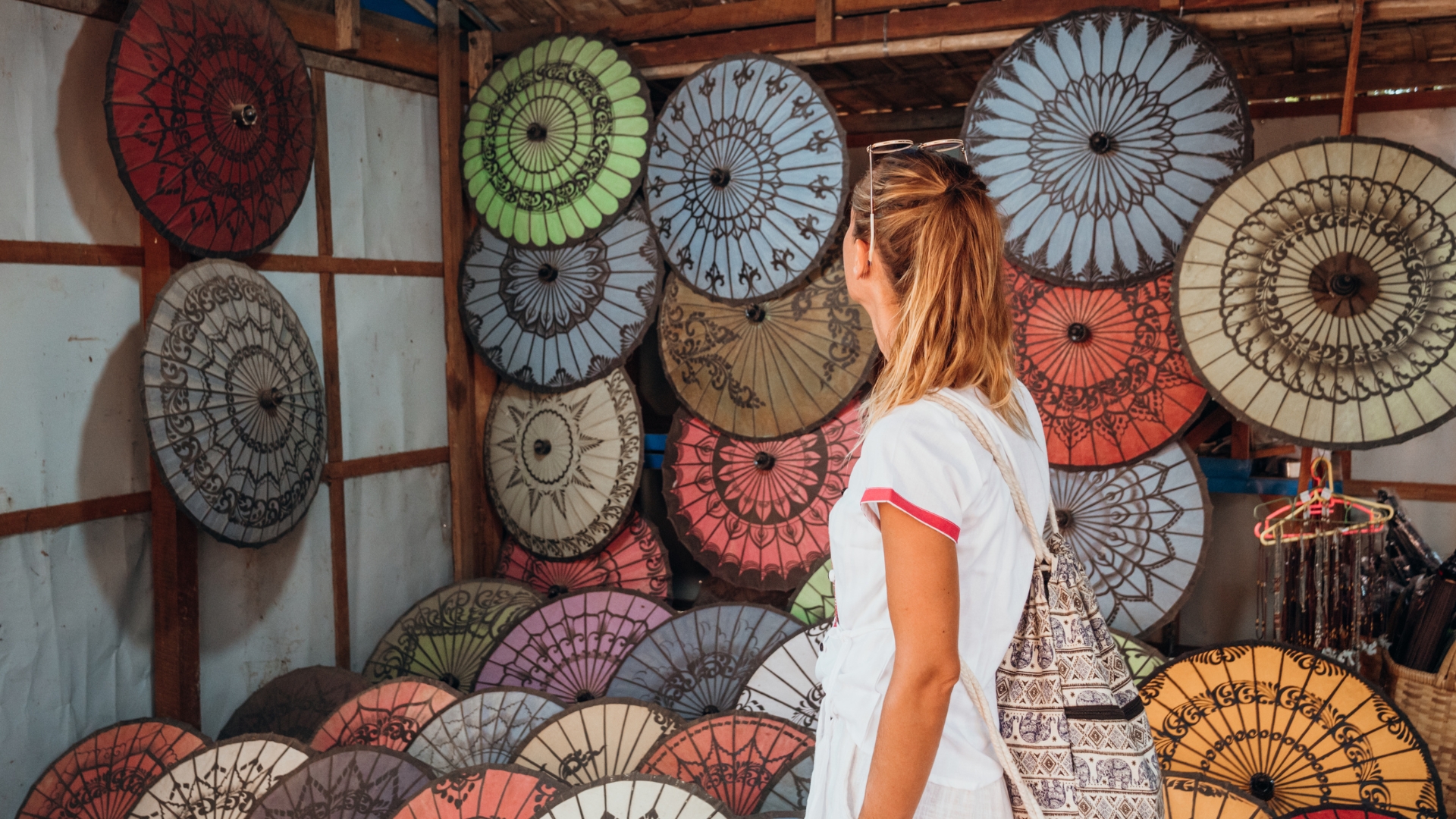
Wander Around The Nyaung U Market
Local Tips When Exploring Sulamani Temple
- Travel time: Bagan’s weather is quite hot so travelers prefer to visit during the period from October to February. Specifically, January and February stand out as the optimal months time for tourists to visit due to cooler temperatures, less rain, numerous festivals, stunning landscapes, and captivating sunsets and sunrises in Bagan.
- Dress respectfully: You should avoid tight-fitting clothing and revealing clothing as it can be considered disrespectful in a religious setting. Neutral colors would be the best for visiting the temple. When entering temple areas, remember to take off your shoes, sandals, and socks.
- During peak travel seasons, it's advisable to bring a warm jacket for the cooler evenings, as the air can get slightly chilly. Additionally, pack sneakers, sunscreen, a hat, a face mask, sunglasses, etc.
- Myanmar's currency is Kyats (MMK). Only major shops or central markets may accept USD, so it's recommended to exchange money for Kyats for shopping in Bagan.